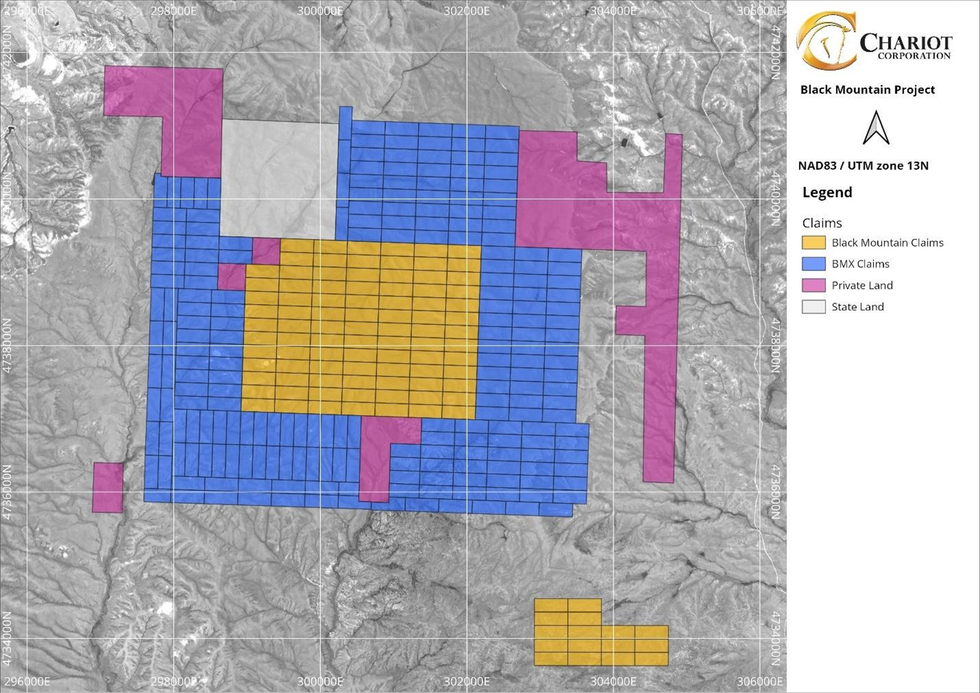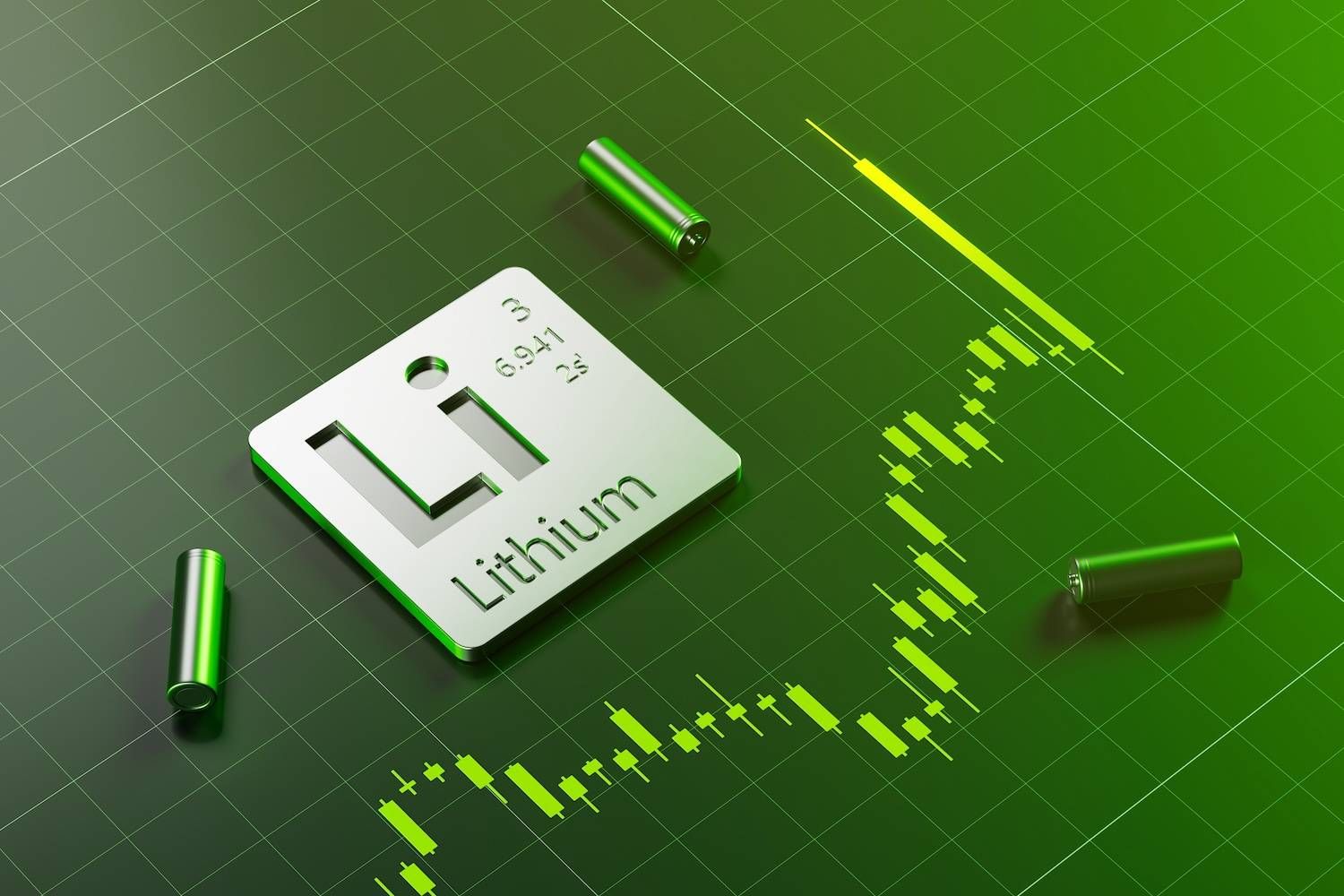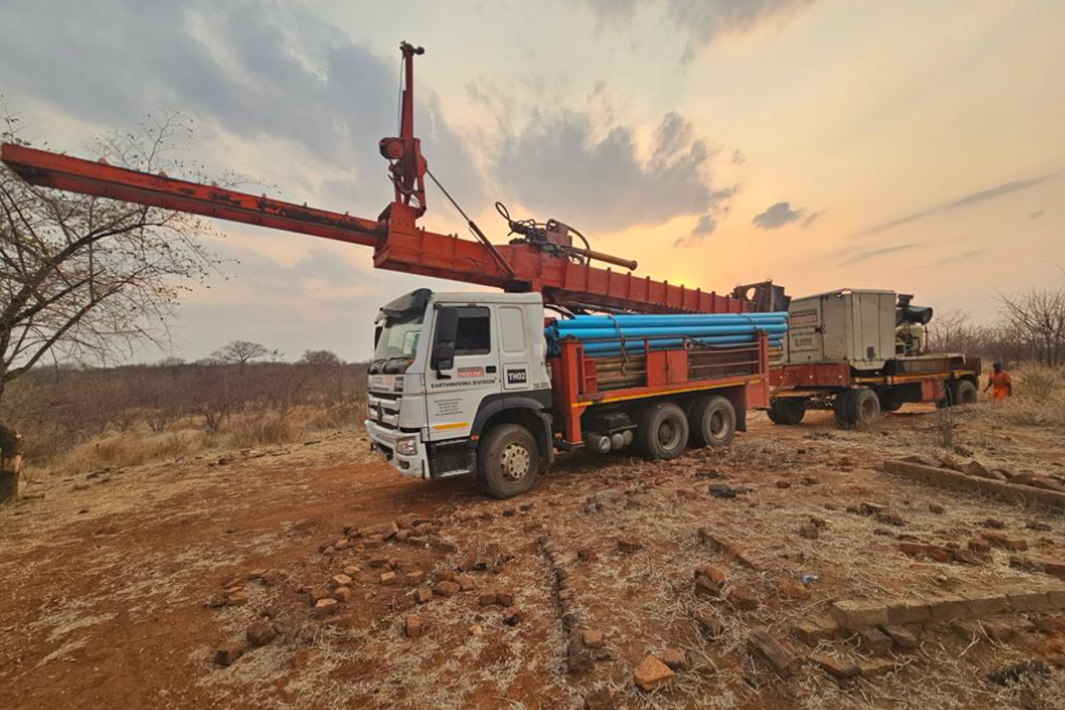
February 29, 2024
Chariot Corporation Limited (“Chariot”, “CC9” or the “Company”) is pleased to announce that it has significantly expanded the footprint of the Black Mountain project (“Black Mountain“) by staking and filing with the Bureau of Land Management (”BLM”) 218 unpatented lode mining claims (“Claims”) totalling 1,807 ha of tenure (“BMX Claims”).
HIGHLIGHTS
- Chariot expands Black Mountain project by 218 contiguous claims resulting in a 206% increase in project tenure area
- Black Mountain project now comprises 352 claims covering 2,686 ha of tenure
- Chariot has increased its ownership interests in its Wyoming Lithium Portfolio to 93.9%
The BMX Claims are contiguous to the Company’s existing Black Mountain Claims and represent a 206% increase in the footprint of Black Mountain (see Figure 1).
The BMX claims were staked as a buffer and to cover possible extensions to the pegmatite dike swarms under shallow cover at Black Mountain.

Increased Ownership of Wyoming Lithium Portfolio
On 9 January 2024, Chariot increased its ownership of Wyoming Lithium Pty Ltd (“WLPL”) from 91.9% to 93.9% via a share subscription to reimburse Chariot for exploration expenses incurred at the Wyoming Lithium Projects.
Chariot’s Preeminent Position in Wyoming
The Company owns seven (7) hard rock lithium projects in Wyoming (“Wyoming Lithium Portfolio”), which is a State that is poised to become an important future supplier of a critical mineral for the U.S.A. (see Figure 2). Each of the projects comprising Chariot’s Wyoming Lithium Portfolio is located in an area without any known land-use encumbrances.
A summary of Chariot’s current land position in Wyoming is summarised below in Table 1 and Figure 2.
Click here for the full ASX Release
This article includes content from Chariot Corporation, licensed for the purpose of publishing on Investing News Australia. This article does not constitute financial product advice. It is your responsibility to perform proper due diligence before acting upon any information provided here. Please refer to our full disclaimer here.
CC9:AU
The Conversation (0)
07 February 2025
Chariot Corporation
Largest lithium exploration land holdings in the US
Largest lithium exploration land holdings in the US Keep Reading...
27 March 2025
Second Amendment to Black Mountain Purchase Option
Chariot Corporation (CC9:AU) has announced Second Amendment to Black Mountain Purchase OptionDownload the PDF here. Keep Reading...
26 March 2025
Convertible Note Financing of up to A$2.0 Million
Chariot Corporation (CC9:AU) has announced Convertible Note Financing of up to A$2.0 MillionDownload the PDF here. Keep Reading...
18 February 2025
High-Potential WA Lithium & Gold Tenements Secured
Chariot Corporation (CC9:AU) has announced High-Potential WA Lithium & Gold Tenements SecuredDownload the PDF here. Keep Reading...
31 January 2025
Quarterly Activities/Appendix 5B Cash Flow Report
Chariot Corporation (CC9:AU) has announced Quarterly Activities/Appendix 5B Cash Flow ReportDownload the PDF here. Keep Reading...
26 November 2024
Black Mountain Phase 2 Program has Commenced
Chariot Corporation (CC9:AU) has announced Black Mountain Phase 2 Program has CommencedDownload the PDF here. Keep Reading...
29 December 2025
SQM, Codelco Seal Landmark Lithium Joint Venture in Salar de Atacama
Sociedad Quimica y Minera (SQM) (NYSE:SQM) and Codelco have finalized their long-awaited partnership, forming a new joint venture that will oversee lithium production in Chile’s Salar de Atacama through 2060.SQM announced on Saturday (December 27) that it has completed its strategic partnership... Keep Reading...
24 December 2025
Altius Minerals to Expand Portfolio with C$520 Million Lithium Royalty Deal
Altius Minerals (TSX:ALS,OTCQX:ATUSF) is making a bet on a lithium market recovery, agreeing to acquire Lithium Royalty (TSX:LIRC) in a C$520 million deal that will expand its exposure to battery metals.Under a definitive agreement announced by the two companies on Monday (December 22), Altius... Keep Reading...
23 December 2025
Liontown's First Tjiwarl Member Completes Apprenticeship at Kathleen Valley
Liontown (ASX:LTR,OTC Pink:LINRF) has reached a milestone at its Kathleen Valley operations, with Vaughan Harris becoming the first Tjiwarl community member to complete an apprenticeship with the company.“Being the first Tjiwarl apprentice to complete an apprenticeship here at Liontown feels... Keep Reading...
22 December 2025
Lithium Market 2025 Year-End Review
The global lithium market endured a bruising 2025, with persistent oversupply and softer-than-expected electric vehicle (EV) demand driving prices for the battery metal to multi-year lows.Lithium carbonate prices in North Asia slipped below US$9,550 per metric ton in February — their weakest... Keep Reading...
11 December 2025
Mining the Gap: 5 Forces Shaping North America’s Lithium Supply Chain
A convergence of industry investments, government initiatives and a shifting global trade dynamic is creating an environment ripe for the development of a North American battery supply chain, with lithium playing a leading role. These trends are reshaping the region’s industrial base and opening... Keep Reading...
10 December 2025
Rock Bottom: Strategic Window for Ground-level Lithium Investment
When lithium prices hit bottom, savvy investors know that’s exactly where the next big discovery begins — literally. Beneath the surface of global markets and remote exploration grounds, new opportunities are forming in the wake of a sharp price reset and renewed geopolitical urgency.Recent... Keep Reading...
Latest News
Interactive Chart
Latest Press Releases
Related News
TOP STOCKS
American Battery4.030.24
Aion Therapeutic0.10-0.01
Cybin Corp2.140.00







